Research Article - (2023) Volume 31, Issue 2
Received: 29-Mar-2023, Manuscript No. IPQPC-23-16399; Editor assigned: 31-Mar-2023, Pre QC No. IPQPC-23-16399 (PQ); Reviewed: 14-Apr-2023, QC No. IPQPC-23-16399; Revised: 19-Apr-2023, Manuscript No. IPQPC-23-16399 (R); Published: 26-Apr-2023, DOI: 10.36648/1479-1064.23.31.16
Background: In the past few decades, global health research has grown incredibly quickly. The interest of scientists and medical professionals in evidence-based medicine (EBM), new drug and vaccine discovery are among the main reasons for the rapid increase of the scholarly literature in health research. The aim of this study is to analyse the scholarly literature published by researchers affiliated with the University of Rwanda (UR) and discover the achievements and gaps in medical and surgical research in UR.
Methods: The University of Rwanda was searched in Lens Scholarly Works, and all articles connected to the university were discovered. We filtered the initial results by field of study to locate materials that were published in medical and surgical fields. Except for co-authorship and keyword co-occurrence analysis which were done using VOSviewer software, all bibliometric analyses were carried out using Lens database.
Results: For the initial search, University of Rwanda was associated with 2,821 articles. After careful assessment of publications based on their field of study, a total of 1,220 and 106 publications were found to be in the medical and surgical fields respectively. The analysis was based on the category of scholarly work, the chemicals of focus of the study, the authors, the funders, and the journal that published the study. Journal articles constitute a sizable fraction of these publications, whereas conference articles, book chapters, reprints, and reports make up a far smaller portion. By comparing the numbers of publications, authors, and funding in the surgical and medical field, many gaps are apparent in surgical than medical research field.
Conclusion: Although there is an increase in number of publications in the University of Rwanda, the number of medical and surgical literature in UR is still low. Improving mentorship to students and involving them in ongoing research projects; not restricting them to only data collection but allow them to participate in peer-reviewed publications are key measures to increase number of medical and surgical scholarly publications in University of Rwanda.
Publications; Medicine; Surgery; University of Rwanda; Achievements; Gaps
EBM) Evidence Based Medicine; (NBER) National Bureau of Economic Research; (GDP) Gross Domestic Product; (WHO) World Health Organization; (UR) University of Rwanda; (ICT) Information Communication Technology; (GIS) Geographic Information System; (ACE) African Centres of Excellence; (CMHS) College of Medicine and Health Sciences; (CAVM) College of Agriculture and Veterinary Medicine; (CST) College of Science and Technology; (CE) College of Education; (CBE) College of Business and Economics; (CASS) College of Arts and Social Sciences;
(FIC) Fogarty International Center; (NIH) National Institute of Health; (HHS) Health and Human Services; (NIAD) National Institute of Allergy and Infectious Diseases; (NHLBI) National Heart, Lung, and Blood Institute; (NICHD) National Institute of Child Health and Human Development;
(NCI) National Cancer Institute; (CHUK) Centre Hospitalier Universitaire de Kigali; (PLOS) Public Library of Science; (AJOL) African Journals Online; (HIV/AIDS) Human Immunodeficiency Virus/ Acquired Immune Deficiency Syndrome; (UNAIDS) The Joint United Nations Programme on HIV/AIDS; (TB) Tuberculosis; (APC) Article Processing Charge; (LMICs) Lower and Middle-Income Countries
There has been rapid and tremendous expansion of global health research in few decades ago [1,2]. Evidence based medicine (EBM), the idea that “what happens to patients should be based to the greatest extent possible on evidence” is among the main reasons to a rapid increase of scholarly literature in different fields of health research [3].
Evidence-based medicine refers to the methodical, explicit, prudent, and reasonable application of the most recent best evidence in deciding how best to treat specific patients. The application of EBM entails matching the unique clinical symptoms and history of a patient with the strongest available scientific evidence from the clinical research. A methodical approach to solving clinical problems that enables the integration of the best research data currently available with clinical experience and patient values is the revised and improved definition of evidence- based medicine [4].
Evidence from high-quality observational research and randomised controlled trials, along with clinical competence and patient needs and preferences, are replacing tradition, anecdote, and theoretical reasoning from basic sciences. Evidence- based medicine has rapidly developed into a vibrant intellectual movement dedicated to improving the safety, consistency, and cost-effectiveness of healthcare by strengthening the scientific and empirical foundation of clinical practice. For example, the Cochrane Collaboration was founded in order to compile and summarize the evidence from clinical trials. Other accomplishments include establishment of methodological and publication standards for primary and secondary research, building national and international infrastructures for creating and updating clinical practice guidelines, creating resources and courses for teaching critical appraisal, and creating the knowledge base for knowledge implementation and translation [5].
The public, scientists, and medical professionals have interest in the potential of novel medications, vaccines, medical treatments, and medical technology. The improvement in health and longevity of people in developed countries has been largely attributed to medical research over the past century, particularly public health breakthroughs [6]. According to the National Bureau of Economic Research (NBER), in the United States, the National Institutes of Health invests more than $ 30 billion annually (about 0.2% of the US GDP) in health research, while other government organizations spend billions more. Approximately the same percentage of GDP is spent on health research in the United Kingdom. However, estimating the benefits of this expenditure has proven challenging. Lab science receives the majority of funding for health research, with smaller but still significant amounts going to behavioral and social research. The immediate result of this funding for researchers is research publications, albeit occasionally there are also patents.
In Sub-Saharan Africa, the total disbursement on health research is very low compared with other WHO regions, and this explains the reason behind low number of publications, inventions and patents in sub-Saharan Africa. In context of Rwanda history, it is very understandable. Following the 1994 genocide against the Tutsi, which left approximately 20% of the population dead and many others with lasting disabilities, the Rwandan health system was completely destroyed. Since then, much work has gone into expanding and rebuilding the health system [7-9]. Prior to 2002, academic research received little attention due to the need to prioritize other tasks, principally attending to the immediate needs of the population. However, an increased emphasis has been placed on evaluations of health initiatives and health research during and after the stabilization phase of 2002 [10].
From 2002, the University of Rwanda (UR) has made apparent progress in research and innovation. 9 research institutes were established, and 78 laboratories supporting research and teaching, spanning from biological sciences, ICT, engineering, and GIS, were also dedicated primarily to research. UR has been the only university in Africa to receive four Centers of Excellence (ACE) designations from the World Bank through competitive funding (ACE in Internet of Things, ACE in Energy for Sustainable Development, ACE in Data Science and ACE in Innovative Teaching, Learning Mathematics and Science). The UR library which is the largest in the nation has subscriptions to 33,000 e-journals that are accessible to all Rwandan higher education institutions. The university actively participates in holding annual conferences, such as science weeks that bring together academia and the public and corporate sectors. Partnerships have been actively cultivated with regional, national and international universities and external sponsors have been actively cultivated. In addition, UR has some of the most significant formal working partnerships with the government [11].
Despite these advances, there are still a lot of gaps to be closed. Although assessments (such as those from Thomson Reuters and Scopus) suggest that the research output produced by UR is of significant importance, making it the second most influential in East Africa after Makerere University, Uganda, the university's research production is low. According to Webometrics, UR is ranked 96th among all African universities. The capacity to communicate the research accomplishments is limited and UR places a strong priority on strengthening the ties between academia, industry, and government [11]. According to 2021 UR Thematic Statistical Report, the total number of publications across different research fields has swiftly increased from 308 publications in 2014 to 2,348 publications in 2021 [12]. however, detailed medical and surgical works of literature from UR have not been clarified. The aim of this research is to analyse the scholarly literature published by UR affiliated in UR, and discover the achievements and gaps in medical and surgical research at the University of Rwanda.
Rwanda and University of Rwanda (UR) Settings
Rwanda is Sub-Saharan country located in East Africa. According to Word Bank 2021 data, Rwanda is classified as a low-income country with a total population of 13,461,888 people. The annual population growth is 2.4% and life expectancy, 67 years.
The GDP is 11.07 current US $ while GDP per capita is 822.3 current US $ with GDP annual growth of 10.9% [13].
The University of Rwanda (UR) is the largest education institution in Rwanda. Currently, UR is composed of 6 colleges, namely the College of Medicine and Health Sciences (CMHS), the College of Agriculture and Veterinary Medicine (CAVM), the College of Science and Technology (CST), the College of Education (CE), the College of Business and Economics (CBE) and College of Arts and Social Sciences (CASS). According to a recent UR Thematic Statistical Report that was released in 2021 [12], from its establishment in 2013 to 2021, a total of 58,385 students have graduated from the University of Rwanda. The report indicates that in academic year 2020-2021, a total of 26,894 students were enrolled in UR, 62% being males while 38% were females. Of the total number of students, 24,961 were in undergraduate, 1,674 in master’s, 218 in PHD, and 41 in other programs. 82% of the total students were financially supported by the government of Rwanda, while 18% were self-sponsored. In the same academic year, the academic staff was composed of 1,256 personnel in which 75.3% were males while 24.7% were females. Among them, 89.0% were working under stature, 6.9% under contract, and 4.1% were expatriates. The number of personnel who had a Ph.D. degree was 29.9% of the total academic staff [12].
The bibliometric analysis in this research was conducted using a database (Lens) and a software (VOSviewer). The Lens was accessed through Research Life. Lens is a database that offers more than 200 million academic records that have been collected and synchronized from Microsoft Academic, PubMed, and Crossref. We searched University of Rwanda in Lens Scholarly Works, and all publications affiliated in the University of Rwanda were found. To find literature published in medical and surgical field, we filtered the initial results by the field of study. The works of literature in medicine and surgery were searched separately. In medicine, we included literature published in fields of Medicine, Medicines reconciliation, Biomedicine, Telemedicine, Nanomedicine, Ethnomedicine, Pain medicine, Folk medicine, Family medicine, Modern medicine, Social medicine, Internal medicine, Tropical medicine, Panacea (medicine), Emergency medicine, Essential medicines, Obstetric medicine, Precision medicine, Sequence (medicine), Biomarker (medicine), Alternative medicine, Physical medicine and rehabilitation, Reproductive medicine, Transmission (medicine), Evidence-based medicine, Intensive care medicine, Disease, Acquired Immunodeficiency Syndrome (AIDS), Medical emergency, Human Immunodeficiency Virus (HIV), Immunology, Malaria, Tuberculosis, Psychiatry, Endocrinology, Cancer, Coronavirus disease 2019 (COVID-19), Clinical trial, Diabetes mellitus, Cervical cancer, Gerontology, Antibiotics, Pathology, Emergency department, Antibiotic resistance, Breast cancer, Pediatrics, Obstetrics and Gastroenterology.
In surgery, we included works of literature that were published in fields of “Cardiac surgery, General surgery, Plastic surgery, Vascular surgery, Elective surgery, Abdominal surgery, Pediatric surgery, Orthopedic surgery, Laparoscopic surgery, Acute care surgery, Head and neck surgery, Cardiothoracic surgery, General thoracic surgery, Enhanced recovery after surgery, Surgery, Surgical care, Abdominal trauma, Hernia, Laparotomy, Bowel obstruction, Angiology, Assistant surgeon, Cardiac catheterization, Cholecystectomy, Chronic granulomatous, Elective Surgical Procedure, Perioperative, Postoperative pain, Bioprosthetic valve, Blunt trauma, Catheter and Diaphragmatic hernia.” We excluded literature published in environmental health, medical education, nursing, public health, health care, health facility, health administration, health policy, community health, health education, and veterinary medicine. we also excluded literature published in the non-medical field including business, technology, economic growth, mathematics education, genocide and others. The analysis of works of literature in medicine and surgery were analysed separately but in comparison. All bibliometric analysis were performed using Lens except co-authorship and keyword co-occurrence analysis that were done using VOSviewer software.
Search Results
The initial search indicated that 2,821 publications were affiliated with the University of Rwanda. After careful selection of publications based on their field of study, a total of 1,220 and 106 publications were found to be in the medical and surgical fields, respectively. The analysis was based on the type of scholarly work, the chemical substances of focus, the authors, the funders, and the journal in which the literature was published.
Types of Literature Published in Medicine and Surgery
This classification is based on types of literature; journal articles, journal issues, conference proceedings articles, book chapters, reprints, and reports. Figures 1 and 2 show the number of publications and their classes in medicine and surgery, respectively. In medicine, a large number of literatures is journal articles while book chapters, conference articles and reports are very few. This trend is also seen in publications in surgical field.
Chemical Substances of Focus
Figure 3 shows the names of chemical substances of focus in the medical literature. Arranging these chemical substances from the ones that appear in many documents, the chemical substances that were mostly focused on are anti-retrieval agents that appear in 19 documents, antibacterial agents that are found in 18 documents, anti-HIV agents that appear in 17 documents, antimalarials in 14 documents, antitubercular agents in 11 documents, plant extracts in 9 documents, artemisinins and biomarkers in 7 documents each, and iron that appears in 6 documents. Anthelmintics, antigens and protozoan, antiviral agents, drug combinations, protozoan proteins, rifampin and tables appear in 5 documents each while viral antibodies, antihypertensive drugs, artemether-lumefantrine drug combination and C-Reactive protein appear in 4 documents each.
In the surgical literature, the most focused chemical substances are analgesics, ketamine and rifampin, which appear in 2 documents each. Other chemical substances, including amphotericin B, antibacterial agents, antihypertensive agents, antimalarials, antitubercular agents, artemisinins, C-Reactive protein, cefuroxime, drug combinations, ethambutol, ferritins, heterocyclic compounds, ibuprofen, iron, isoniazid, peroxides and phosphates, appear in 1 document each. All chemical substances appearing in surgical literature are shown in Figure 4.
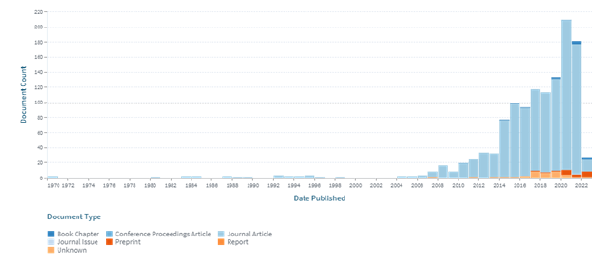
Figure 1: Categories of publications of medical research affiliated with the University of Rwanda

Figure 2: Categories of publications of surgical research affiliated with the University of Rwanda
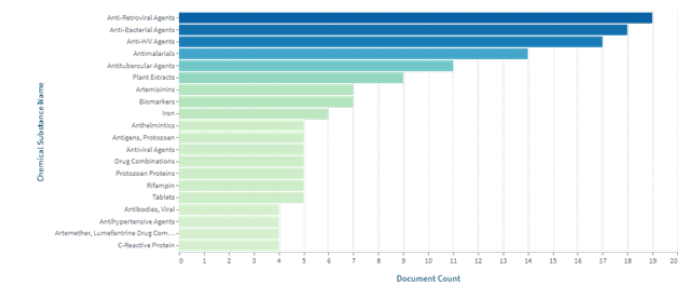
Figure 3: Chemical substances of focus in medical publications of researches affiliated with UR
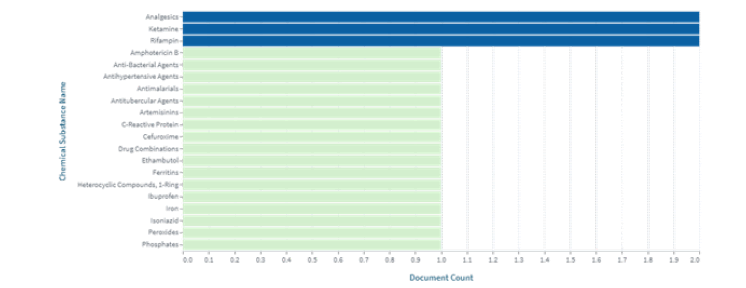
Figure 4: Chemical substances of focus in the surgical publications of researchers affiliated with UR
Top Authors in the Medical and Surgical Literature
In medicine, arranging from authors with the largest number of scholarly publications, the 10 top authors are Stephen Rulisa with 70 medical publications, Leon Mutesa with 69 medical publications, Joseph Ntaganira with 50 publications, Claude Mambo Muvunyi with 45 publications, Bethany Hedt-Gauthier with 40 publications, Patrick Kyamanywa with 37 publications, Jean Bosco Gahutu with 33 publications, Sabin Nsanzimana with 29 publications, Agnes Binagwaho and Georges Ntakiyiruta with 27 publications each. Other researchers are with less than 25 publications in medical field. Figure 5 shows all authors with more than 10 publications in medical field.
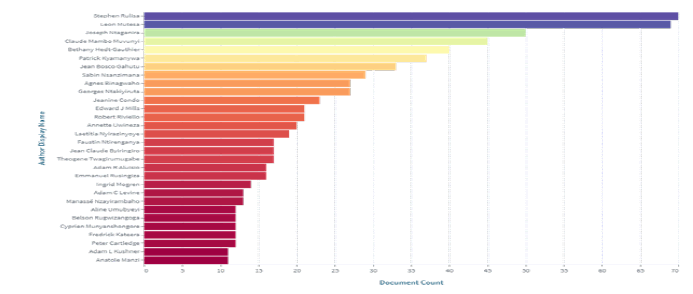
Figure 5: UR affiliated top authors in medical research
The authors have collaborated in different researches. Among 5,686 authors who have published 1,220 publications in medicine, 80 published at least 10 publications. Among the 80 authors, 77 worked together on different works of medical literature. For example, Stephen Rulisa worked with Leon Mutesa, Claude Mambo Muvunnyi, Belson Rugwizangoga, Faustin Ntirenganya, and others. Claude Mambo Muvunnyi worked with Leon Mutesa, Stephen Rulisa, Sabin Nsanzimana, Jennifer Richard, Jean Claude Byiringiro and others. Figure 6 shows a network of 77 authors who have collaborated in medical research. Looking at author keywords, in a total of 1,220 publications, 1,656 keywords were used. Among these keywords, 159 were used at least three times, but only 159 are well-connected. The most frequently used keywords are Rwanda, which was used 169 times, Africa; 31 times, HIV; 23 times, global health; 21 times, and developing countries, which appeared 12 times. Figure 7 shows author keyword co-occurrence.
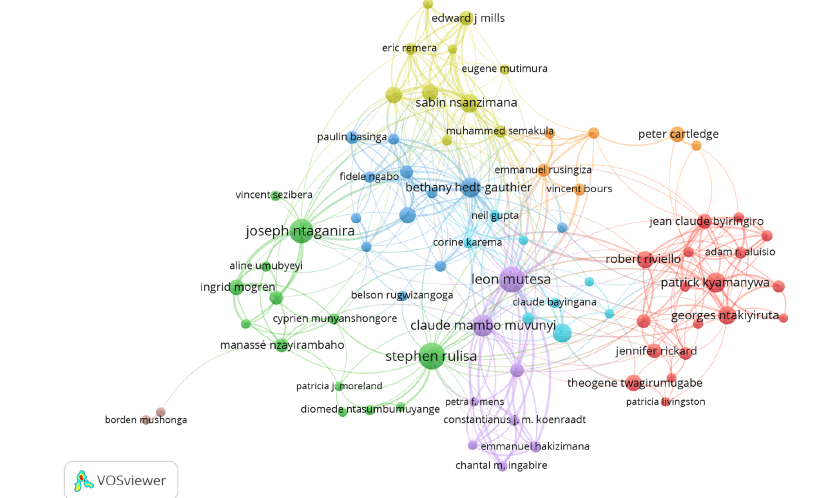
Figure 6: VOSviewer mapping of co-authorship in medical research among UR-affiliated researchers
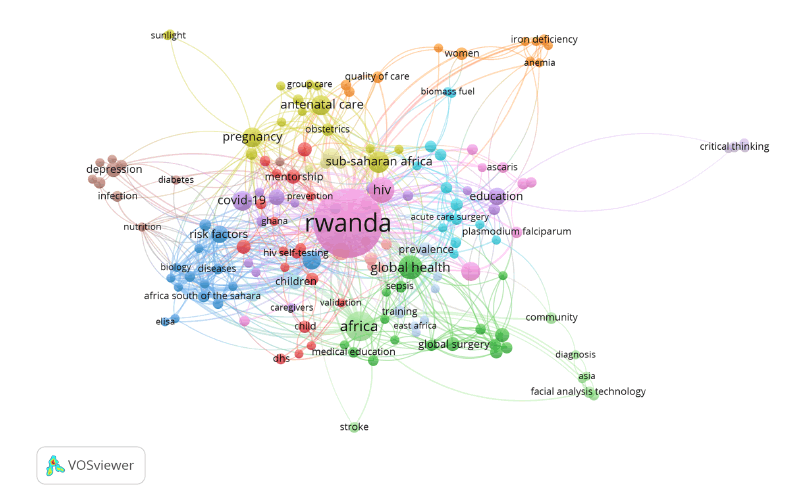
Figure 7: Keyword co-occurrence in medical publications of UR-affiliated researchers
In a total of 106 publications in surgical field, the top 5 authors are Georges Ntakiyiruta with 15 publications, Jennifer Richard with 12 publications, Robert Riviello with 9 publications, Bethany Hedt-Gauthier and Patrick Kyamanywa with 8 publications each. Other researchers include Edmond Ntaganda, Faustin Ntirenganya, Rbin T Petroze, and others. Figure 8 shows all the top authors in the surgical field. In 529 authors who have published 106 publications, 113 have published at least 2 publications. All these 113 authors worked together in different researches, but 100 are well-connected. Figure 9 shows a network of co-authorship among 100 well-connected authors in surgery. A total of 117 author keywords were used in 106 publications, and only 86 are well connected. Figure 10 shows 86 connected keywords that the authors used.
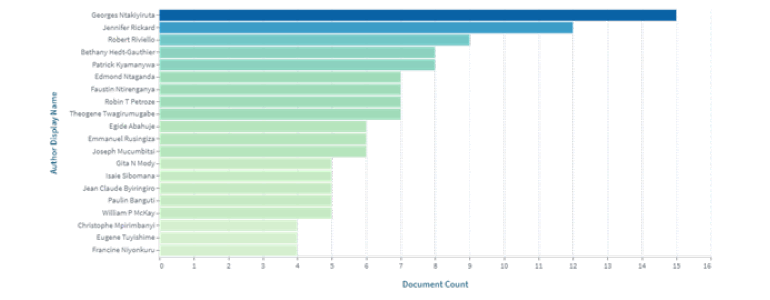
Figure 8: UR-affiliated top authors in surgical research
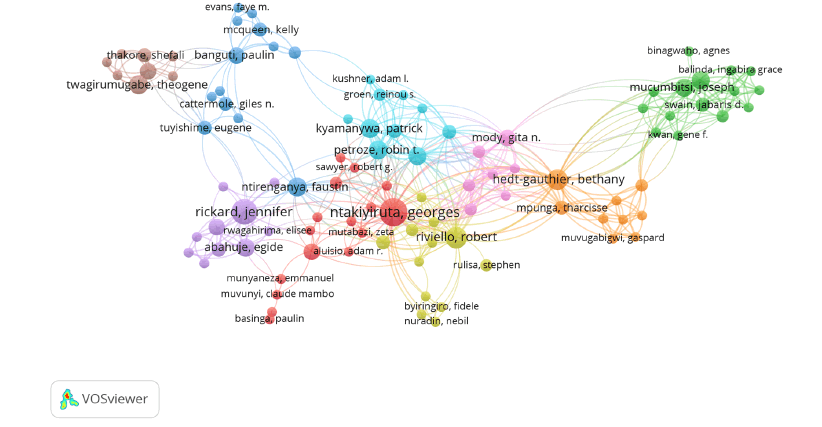
Figure 9: VOSviewer mapping of co-authorship in surgical research among UR-affiliated researchers
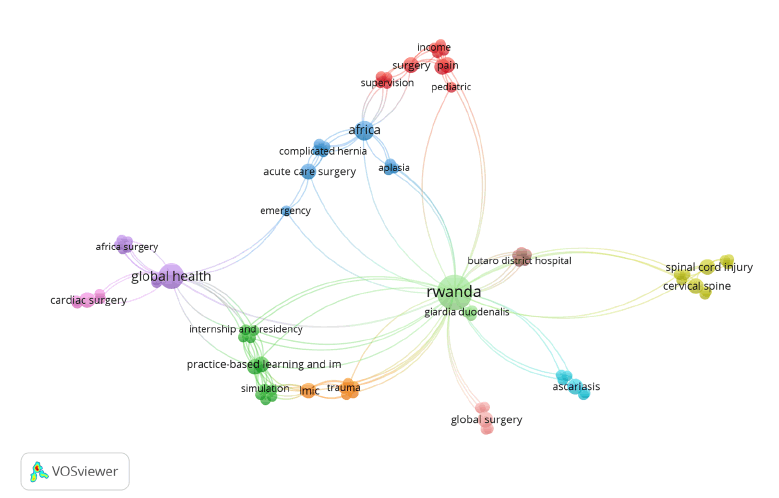
Figure 10: Keyword co-occurrence in surgical research among UR-affiliated researchers
Top Funders that have Funded Research in Medicine and Surgery
In 1,220 publications in medical field, 34 were funded by FIC NIH HHS (Fogarty International Center, National Institute of Health, Department of Health and Human Services), 29 were funded by NIAD NIH HHS (National Institute of Allergy and Infectious Diseases, National Institute of Health, Department of Health and Human Services), 20 by the Wellcome Trust, and 15 by Bill and Melinda Gates Foundation. Medical Research Council, NHLBI NIH HHS (National Heart, Lung, and Blood Institute, National Institute of Health, Department of Health and human Services) and World Health Organisation funded 13 researches each. NICHD NIH HHS (Eunice Kennedy Shriver National Institute of Child Health and Human Development, National Institute of Health, Department of Health and Human Services) funded 12 researches while NCI NIH HHS (National Cancer Institute, National Institute of Health, Department of Health and human Services) funded 10 researches. Other funders have funded less than 10 studies. All funding organizations are shown in Figure 11.
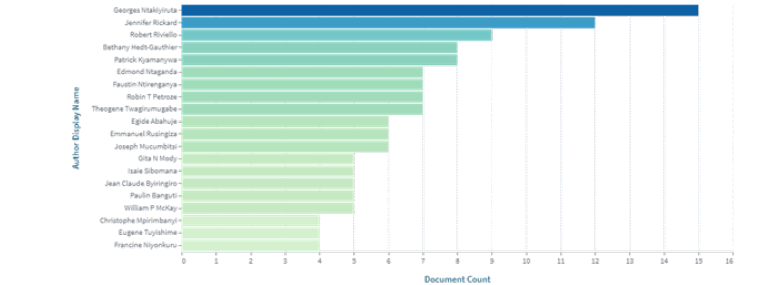
Figure 11: Top funding organizations that have funded medical research in UR researchers
In surgery, among 106 publications, 3 were funded by NHLBI NIH HHS, 2 were funded by FIC NIH HHS and NIAID NIH HHS each. Other organizations including AO Foundation, American Heart Association, Brown University, University Teaching Hospital of Kigali known as Centre Hospitalier Universitaire de Kigali (CHUK), German Federal Ministry of Education, Edwards Lifesciences, Harvard Medical School, Medical Research Council and others funded only one research each. All funders in surgical research are shown in Figure 12.
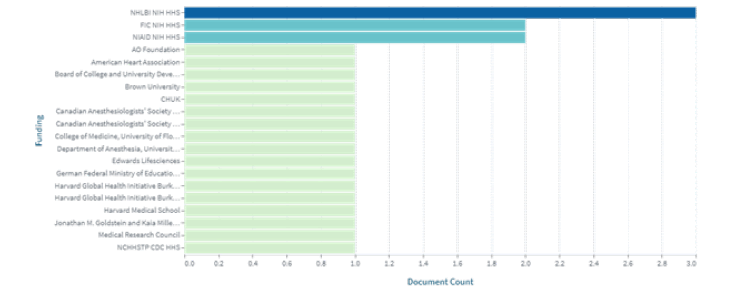
Figure 12: Top funding organizations that have funded surgical research in UR researchers
Top Journals in which Medical and Surgical Literature were Published
In medicine, a large number of publications have been published by Elsevier, BioMed Central, Springer Nature, Wiley, Public Library of Science (PLOS) and African Journals Online (AJOL). Figure 13 shows different journals by publisher and the number of publications in these journals. Looking in surgery, the top 5 journals in which a large number of literatures was published are World Journal of surgery, Canadian Journal of Anesthesia, African Journal of Emergency Medicine, Journal of Surgical Education and Lancet (London, England). Figure 14 shows all journals and the number works of literature that were published in each.
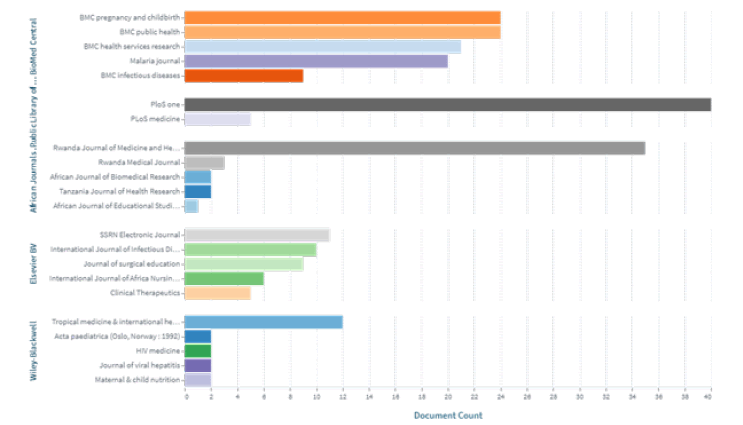
Figure 13: Top journals and publishers that published UR-affiliated medical research
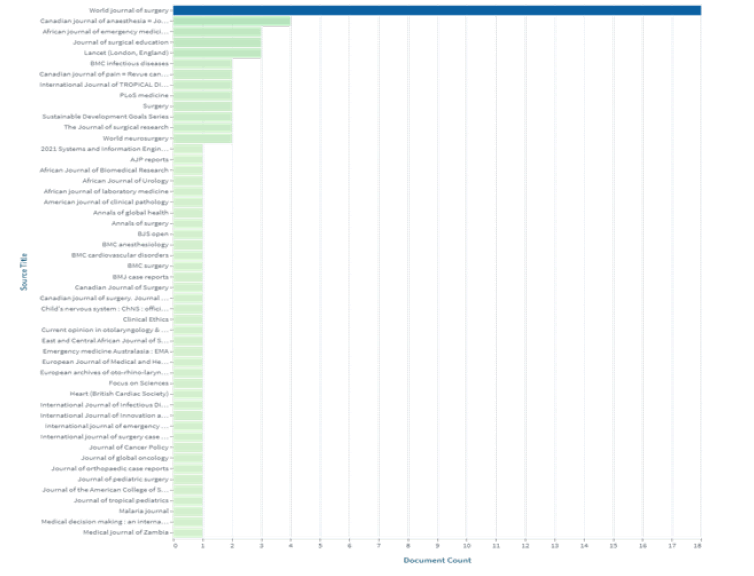
Figure 14: Top journals that published UR-affiliated surgical research
The objective of this bibliometric analysis was to discover the achievements and gaps in medical and surgical research at the University of Rwanda. Lens database and VOSviewer software were used to analyse 1,220 medical and 106 surgical literatures published by authors affiliated with the University of Rwanda. Prior to 2002, academic research received little attention due to the need to prioritize other tasks, primarily attending to the immediate needs of the population. However, a new emphasis has been put out on academic research during and after the stabilization phase of 2002. This shift in focus has been made possible by the stabilization of the health system, which has resulted in part from the reduction of epidemic diseases such as HIV/AIDS, malaria, tuberculosis, and pneumonia from the list of emergencies, as well as improvements in the treatment of fever, cough, and diarrhea, and the accomplishment of development projects through collaborations with international organizations [10]. In general, based on results of the followed methodology, the number of medical and surgical literature is increasing in University of Rwanda. However, the number of works of literature published in surgical field is still small in comparison to the publications in medical field.
A little number of publications in surgery may have been caused by two main reasons; inadequate number of surgeons in Rwanda and lack of enough funds to carry out surgical researches. Despite the minimum of 20 surgical doctors per 100,000 population as recommended by the Global Surgery Commission, according to the World Bank, in 2016, there was only one surgical specialist per 100,000 population in Rwanda [14-16]. A study by Shawn J. Rangel et al. to measure trends in funding of surgical research showed that compared to nonsurgical ideas, surgical proposals have much lower success rates. In their study, funds for surgery were from 5% to 27% less on average than grants for other procedures, and compared to non-surgeons, surgeons showed 35% to 65% less peer-review activity when grant submission activity was standardized. Therefore, compared to nonsurgical grant proposals, surgical grant proposals have a lower probability of funding and much smaller awards. The number of surgeons who engage in the review process is rather low, and those who do are more likely to be underrepresented in study sections [17]. Surgery projects have had fewer financial opportunities than other global health initiatives. Lack of funding has been a major source of frustration as more surgical academics try to establish careers in this field. While financing for global surgery is expected to rise in the future, it is still possible to secure funding in the present climate if initiatives are well designed, have objectives that closely coincide with donor priorities, and if one is persistent [18].
Most of the publications that were published in both medical and surgical fields are journal articles. Book chapters that have been published are apparently few. In the medical field, book chapters were not published until 2014. From 2014 to 2023, some book chapters were published but to a small extent. A large gap in book chapter publications is seen in the surgical field. From 2007 to 2023, only two book chapters were published between 2021 and 2022. The issue of inadequate authorship is not in Rwanda only, but also in the continent. African colleges now heavily rely on imported publications, even for courses covering material specifically related to Africa, such as history, literature, music, politics, sociology, and economics. This is because there are not enough academic books authored by African academics. The growth and production of academic books on the continent is being hampered by a weak publishing business in Africa, which includes a lack of distribution hubs and an intra-African book trade, as well as colonial-era curricula, pedagogy, and learning processes that are still in use today. Additionally, African academics fail to succeed even after publishing due to substandard content, invisibility (due to the topic matter or because the author may be obscure and from a developing nation), the publisher's distance (which may not have a wide reach), and bad marketing and distribution [19].
Rwanda has started a journey to reduce and eradicate HIV, malaria, Tuberculosis and other diseases across the country. Consequently, many researchers have become interested in research to these diseases. As it is shown in Figure 3, the names of chemical substances that were mostly focused on in medical research are anti-retrieval agents, antibacterial agents, anti- HIV agents, antimalarials, and antitubercular agents. According to the Joint United Nations Program on HIV/AIDS (UNAIDS), Rwanda has successfully decreased the spread of the HIV epidemic, dropping the burden from 17% within three years of the virus infecting the country in 1983 to the present 3% [20]. According to WHO African region, Rwanda has made considerable strides in reducing the prevalence of malaria over the past 10 years [21]. As the member of World Health Assembly, Rwanda approved the END TB plan, which seeks to end the worldwide TB pandemic by 2035 by significantly reducing death and incidence as well as the social and economic impact of this illness [22]. The reduction of HIV/AIDS, malaria and tuberculosis burden has been accompanied by more publication. In the surgical field, the names of chemical substances that mostly appeared include analgesics and ketamine which are pain-killing agents and anesthetic agents, respectively. These agents were focused on because anesthesia is primary requirement for surgery as anesthesia helps in making a patient unconscious, numb to painful sensations, and able to control their autonomic responses during surgery [23]. Other chemical substances including rifampin, amphotericin B, antibacterial agents, antihypertensive agents, cefuroxime, artemisinins and others were also emphasized.
Looking at top funders who have funded researches in medicine and surgery, they are almost all foreigners. This highlights the insufficiency of internal funds to support research in medicine and surgery in Rwanda. In addition to difficulty for institutions in recruiting qualified researchers in the nation, a shortage of funding makes research professionals less attractive in Rwanda [24]. According to 2018 report of East African Health Research Commission, in year 2014-2015, Only USD 79,610 of Rwanda's total budget for health research financing came from indigenous sources, and the remaining USD 5,854,771 came from outside sources. This means that the domestic funding for health research was only 0.3% and 23% was external funding with financing gap of 76.7%. According to the data, 98.66% of Rwanda's funding for health research comes from abroad [25].
A large number of medical and surgical literature was published by Elsevier, BioMed Central, Springer Nature, Wiley, Public Library of Science (PLOS), and African Journals Online (AJOL). The Article Processing Charge (APC) policies and the scope of publications of these publishers are thought to have contributed to this situation. A study by Lawson showed that 68.8% of publishers offer fee waivers that are mainly available for authors from lower and Middle-Income Countries (LMICs) [26]. For example, Elsevier, BioMed Central, PLOS and Springer Nature automatically offer fee-waiver for authors from countries that are categorized by World Bank as lower-income countries (Research4Life group A countries) in which Rwanda is also categorized. Furthermore, African Journals Online (AJOL) does not charge authors for publications at all [27-31].
The number of published medical and surgical works of literature is increasing in University of Rwanda. A large number of these publications are journal articles, and a small proportion are conference articles, book chapters, reprints, and reports. Many gaps are seen surgical than medical research by comparing the number of publications, authors and funds in both fields. Increasing the number of academic staff in medicine and surgery may help to identify and cover different gaps in both fields. Furthermore, improvement research courses in undergraduate and residency programs can play an important role in raising research-enthusiastic medical and resident students who are able to identify and fill gaps in different aspects of medicine and surgery. This can be better done by also improving mentorship to students and involving them in ongoing research projects, not restricting them to data collection only, but allow them to participate in peer-reviewed publications. Furthermore, the establishment of different health research centers and the increasing medical and surgical research funds in Rwanda, particularly in University of Rwanda, would increase motivation in academic staff, residents, and medical students to carry out many researches, hence filling the identified gaps, and participating in solving global medical and surgical issues.
None.
Ethics Approval and Consent to Participate
Not applicable.
Consent for Publication
Not applicable.
Availability of Data and Materials
All data generated or analyzed during this study are included in this published article.
Competing Interests
The authors declare that they have no competing interests.
Author’s Contribution
Two authors have contributed together for preparing this product, O S conceptualization, developing methodology, verification of methodology, writing original draft, project administration. EM Reviewing and editing the first manuscript. Both authors reviewed and edited the second and the final draft.
This research has not received any kind of funding.
Citation: Olivier S, Eruine M (2023) Involvement of the University of Rwanda in Medical and Surgical Research A Bibliometric Analysis of Achievements and Gaps. Qual Prim Care. 31.16.
Copyright: © 2023 Olivier S, et al. This is an open-access article distributed under the terms of the Creative Commons Attribution License, which permits unrestricted use, distribution, and reproduction in any medium, provided the original author and source are credited.